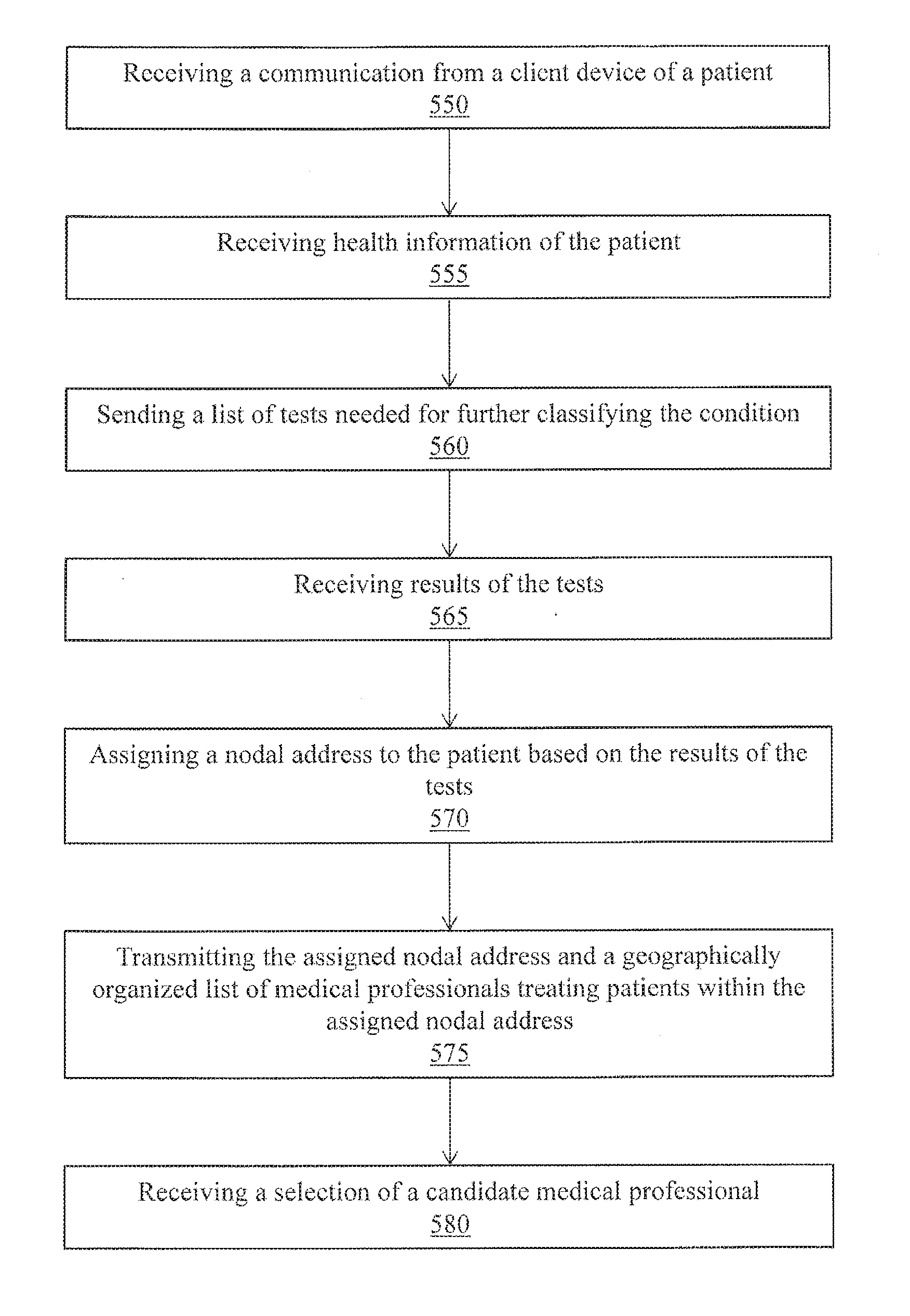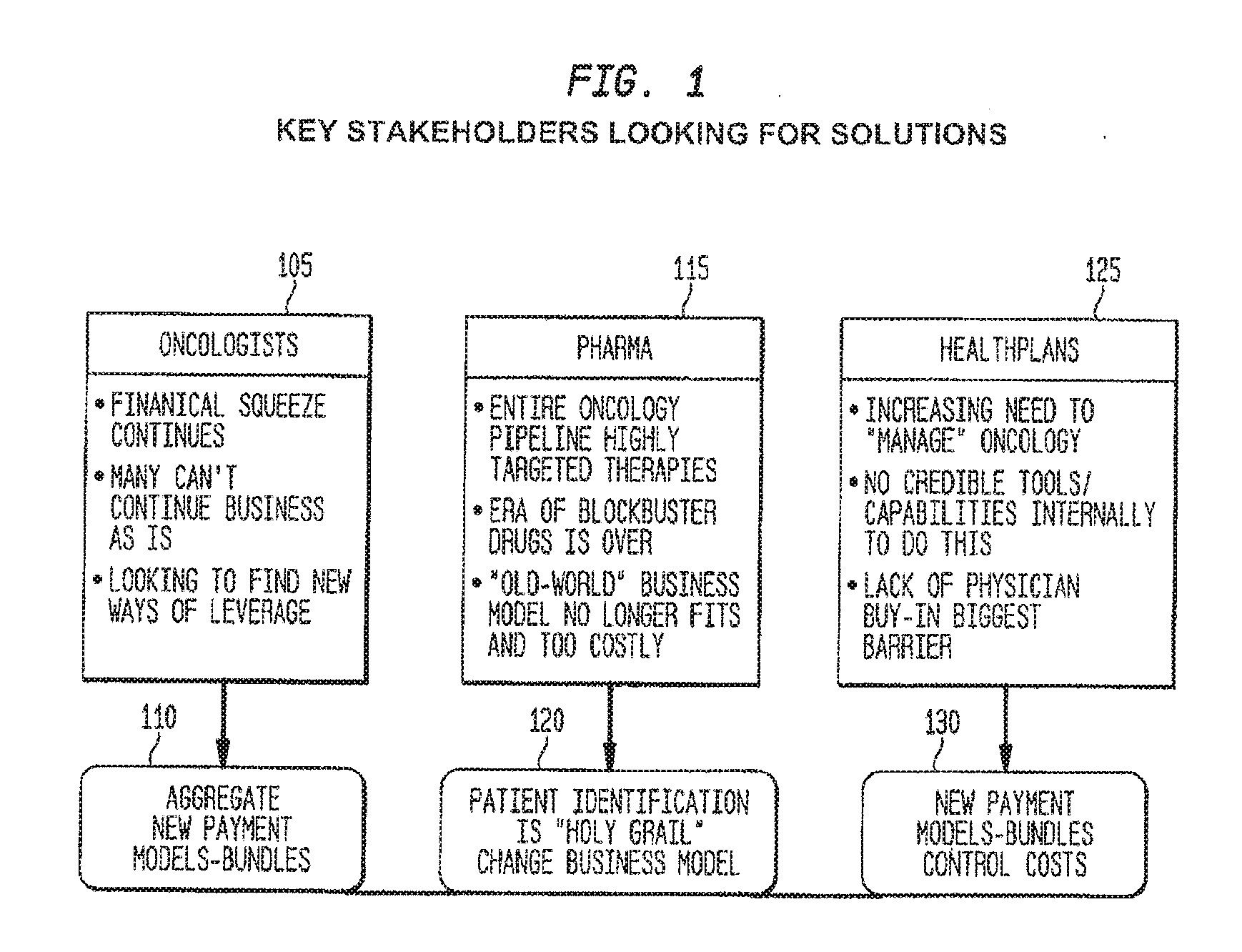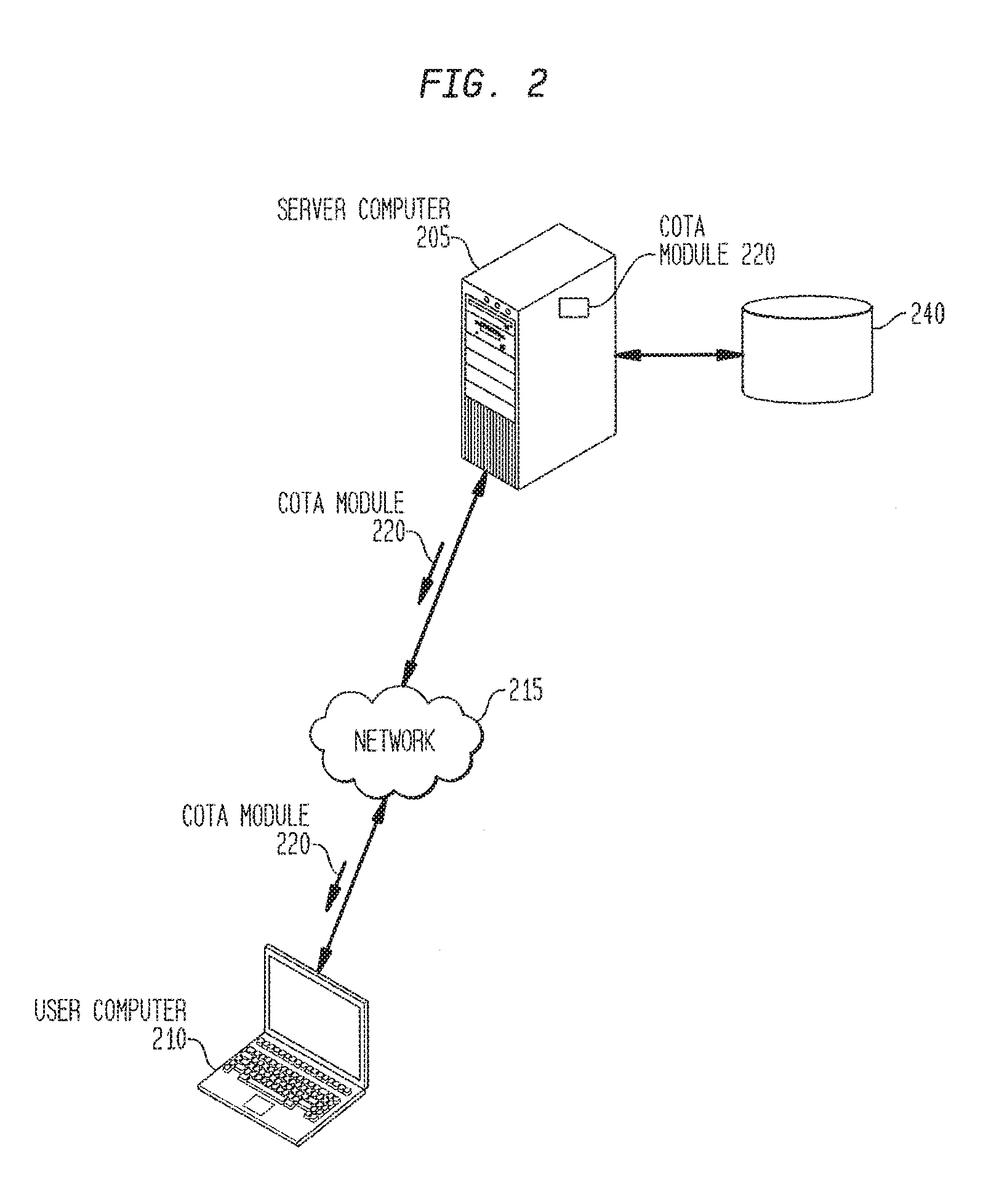Cna-guided care for improving clinical outcomes and decreasing total cost of care
a technology of cna-guided care and clinical outcomes, applied in the field of cna-guided care, can solve the problems of increasing the cost of serious and chronic diseases, such as cancer, inability to sustainably grow, and too little or too much care for an individual patient, so as to improve clinical outcomes and reduce the total cost of care.
- Summary
- Abstract
- Description
- Claims
- Application Information
AI Technical Summary
Benefits of technology
Problems solved by technology
Method used
Image
Examples
Embodiment Construction
[0084]Embodiments are now discussed in more detail referring to the drawings that accompany the present application. In the accompanying drawings, like and / or corresponding elements are referred to by like reference numbers.
[0085]Various embodiments are disclosed herein; however, it is to be understood that the disclosed embodiments and user interfaces as shown are merely illustrative of the disclosure that can be embodied in various forms. In addition, each of the examples given in connection with the various embodiments is intended to be illustrative, and not restrictive. Further, the figures are not necessarily to scale, some features may be exaggerated to show details of particular components (and any size, material and similar details shown in the figures are intended to be illustrative and not restrictive). Therefore, specific structural and functional details disclosed herein are not to be interpreted as limiting, but merely as a representative basis for teaching one skilled ...
PUM
 Login to View More
Login to View More Abstract
Description
Claims
Application Information
 Login to View More
Login to View More - R&D
- Intellectual Property
- Life Sciences
- Materials
- Tech Scout
- Unparalleled Data Quality
- Higher Quality Content
- 60% Fewer Hallucinations
Browse by: Latest US Patents, China's latest patents, Technical Efficacy Thesaurus, Application Domain, Technology Topic, Popular Technical Reports.
© 2025 PatSnap. All rights reserved.Legal|Privacy policy|Modern Slavery Act Transparency Statement|Sitemap|About US| Contact US: help@patsnap.com



